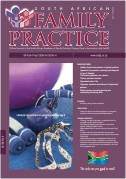Depression Later in Life – an Approach for the Family Practitioner
Keywords:
depression, late life, multimodal, multidisciplinary approach
Abstract
Depressive disorder is the most common mental health problem in older people. Health professionals mainly come into contact with those who are most susceptible to depression, including older people who live in residential facilities and the frail with acute or chronic physical illness. Quite often, such individuals also exhibit multiple pathology. Under these circumstances, health professionals may have an exaggerated view of the extent of depression among the elderly, causing them to overlook depressive disorders that they may have developed. Organic factors, including alcohol and iatrogenic drugs, must be ruled out in the aetiology. Physical ill health must receive optimum treatment. The choice of antidepressant drug is based on the side-effect profiles and potential drug-drug interactions, rather than on the degree of therapeutic efficacy. Treatment should be multimodal and multidisciplinary, with the aim of complete recovery and not simple improvement. By using a range of treatments, most patients will recover, though keeping patients well is more difficult. Treatment should be continued for at least 12 months. Many patients who could benefit from long-term maintenance therapy do not receive it. With optimum management the prognosis is at least as good as that for any other stage of adult life.
Published
2008-05-08
Section
CPD
By submitting manuscripts to SAFP, authors of original articles are assigning copyright to the South African Academy of Family Physicians. Copyright of review articles are assigned to the Publisher, Medpharm Publications (Pty) Ltd, unless otherwise specified. Authors may use their own work after publication without written permission, provided they acknowledge the original source. Individuals and academic institutions may freely copy and distribute articles published in SAFP for educational and research purposes without obtaining permission.

